
Key Points
- Advance/Decline Lines Pullback to Key Levels
- NYSE New Lows Continue to Move Higher
- NYSE New Highs Fall Again
- 200-Day Data Fails to Reverse Higher
- 20-Day Breadth Data Nears Washout Level
NYSE Breadth
The NYSE Advance/Decline Line has pulled back to test its rising 50-day moving average as stocks have come under pressure. Equity bulls want to see this indicator make a prompt reversal and see the S&P 500 regaining its 50-day moving average before becoming more bullish.
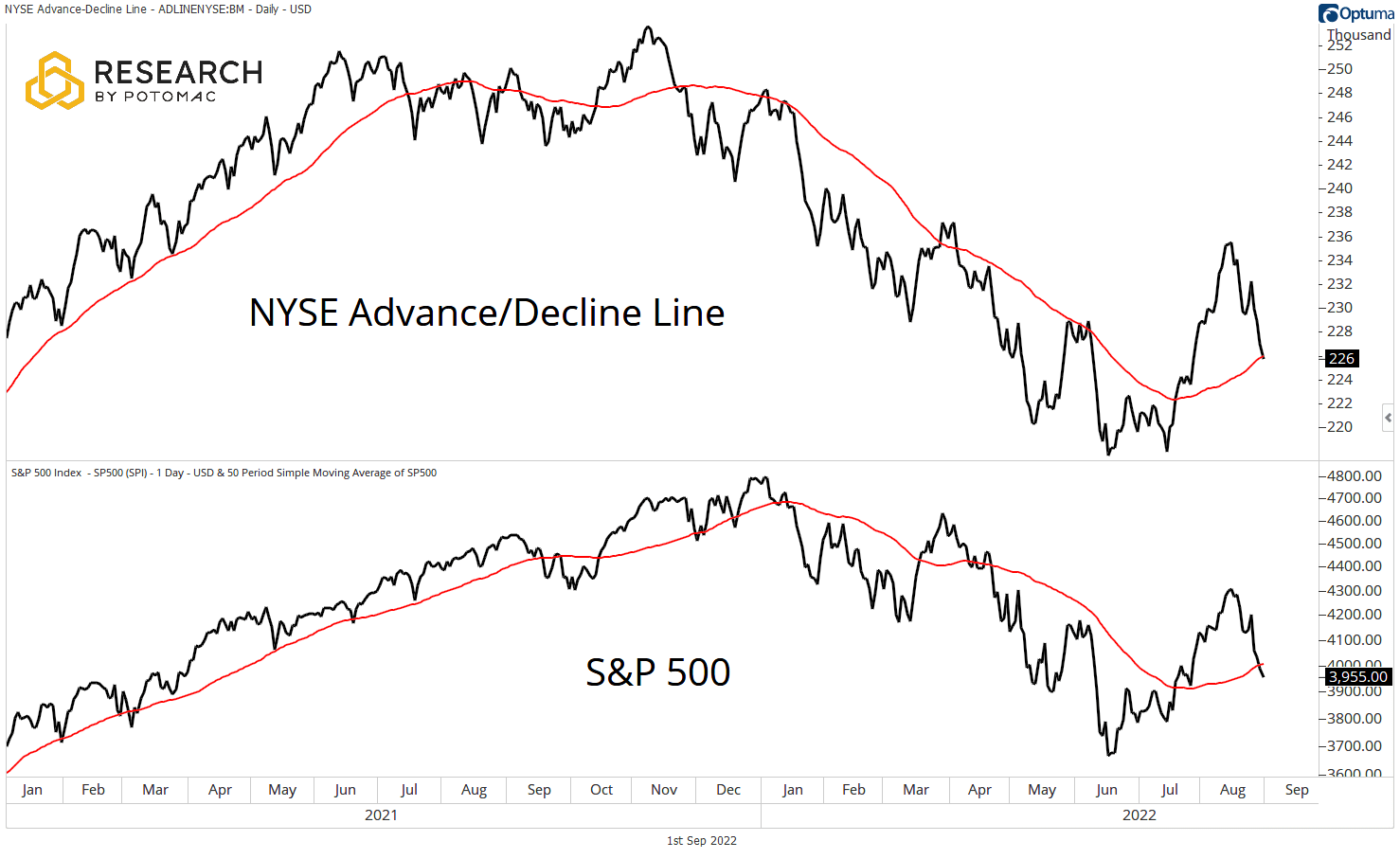
The five-day moving averages of issues on the NYSE making new 52-week and six-month lows have both continued to move higher over the past week. Should weakness in equities persist, bulls want to see these metrics make a lower high relative to June.

The five-day moving averages of stocks on the NYSE making new six-month, and 52-week highs have continued to move lower this week.
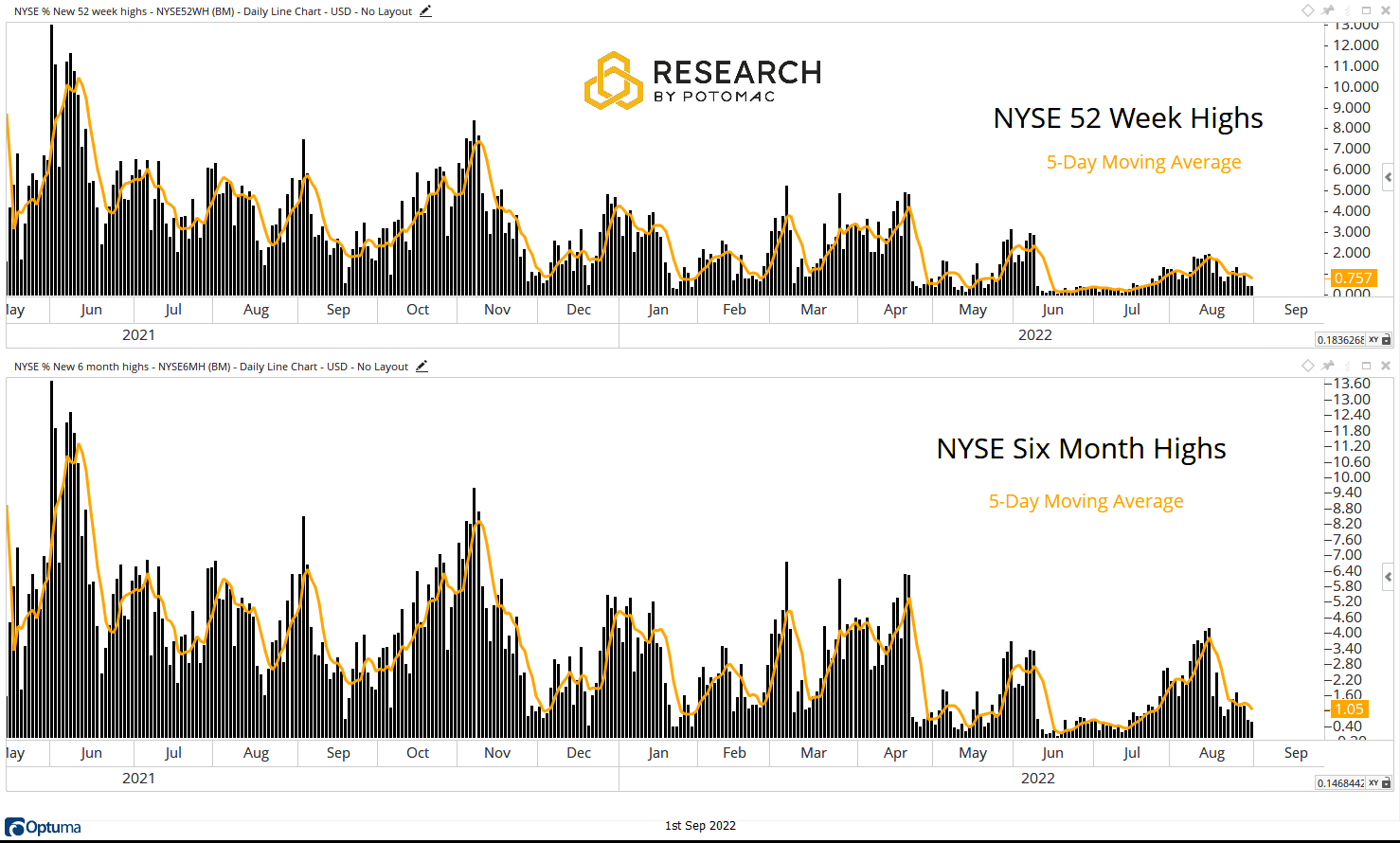
The percentage of NYSE issues trading above their respective 200-day moving averages moved to 21% this week from 26% last week. The S&P 500 was rejected at its own 200-day moving average. The bears still control the long-term trend.
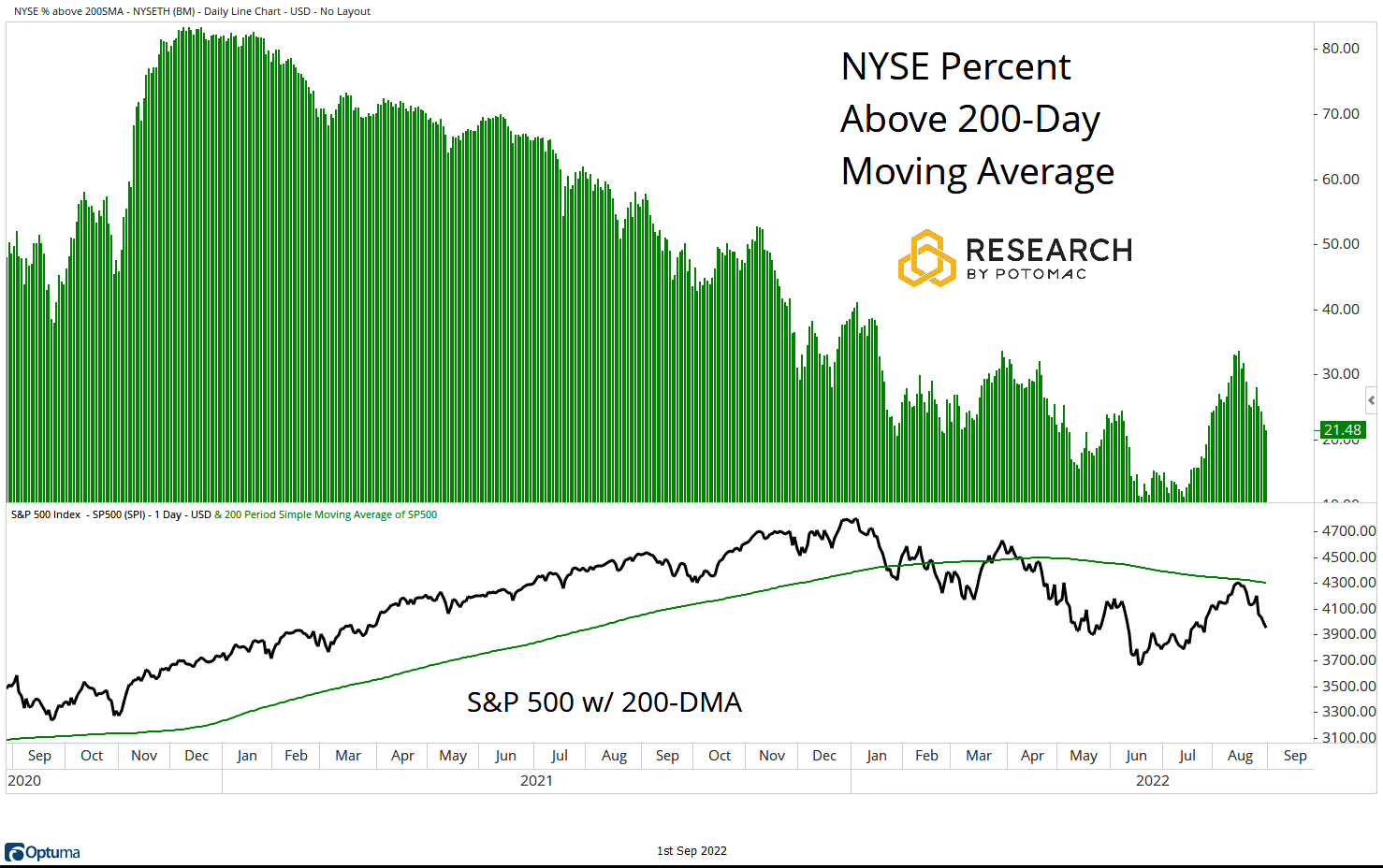
The percentage of NYSE issues trading above their respective 50-day moving averages moved to 40% from 64% last week. The S&P 500 is below its 50-day moving average.
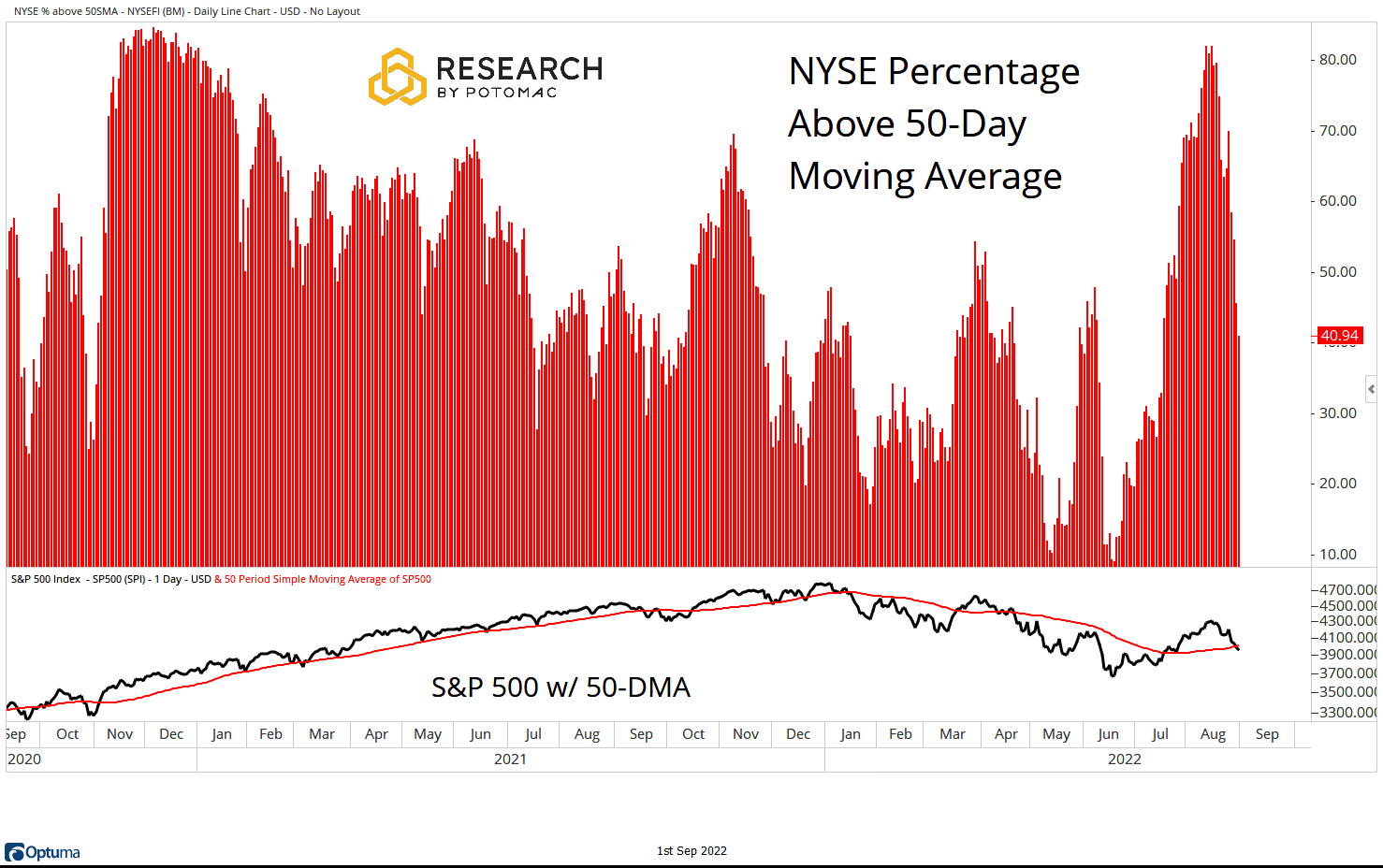
The percentage of issues on the NYSE trading above their respective 20-day moving averages moved to 17% this week from 36% last week. The S&P 500 closed below its 20-day moving average.
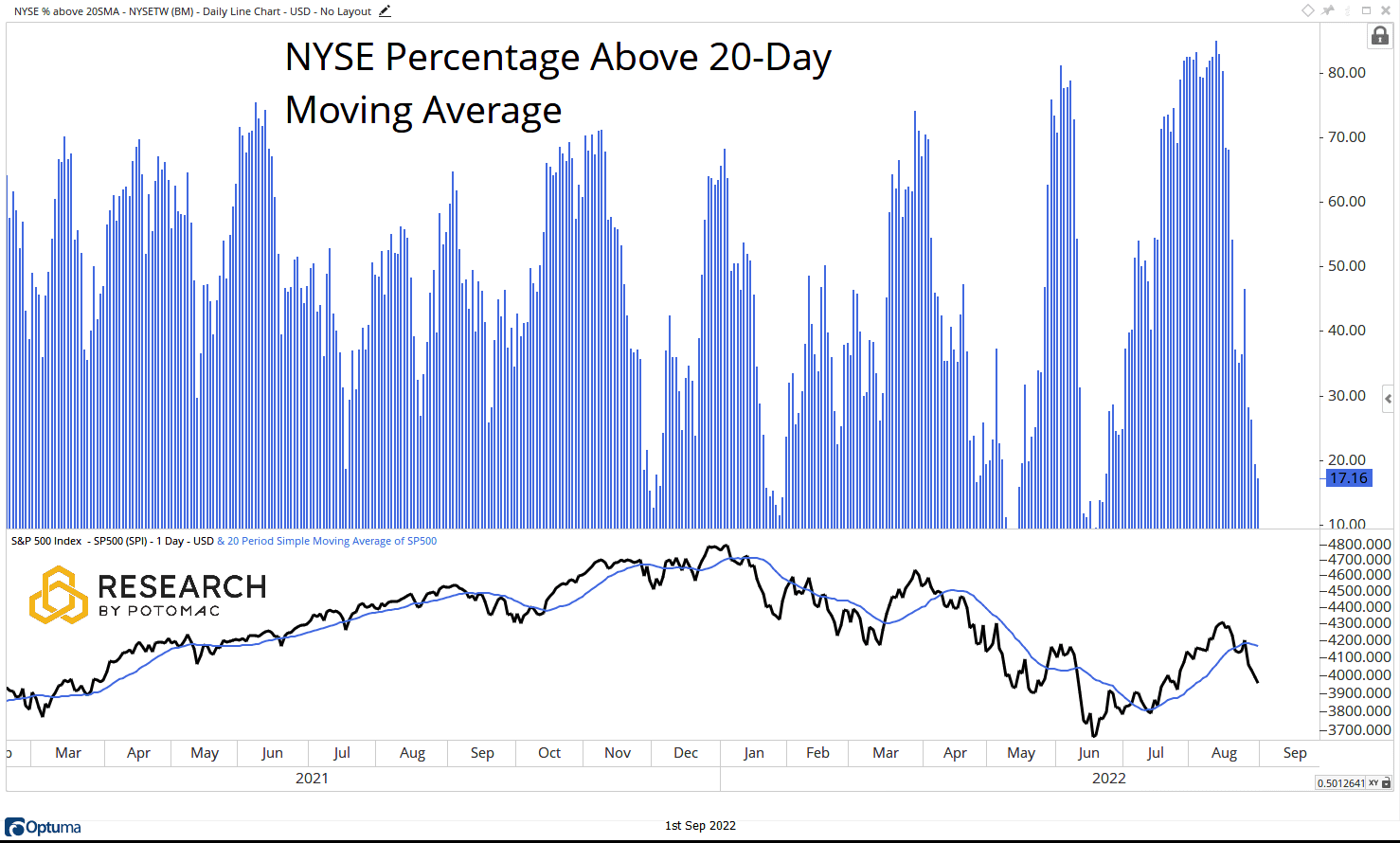
S&P 500 Breadth
Breadth metrics for the S&P 500 have weakened this week.
- Advance/Decline Line: Testing the 50-day moving average.
- Percent Above Their 200-Day Moving Average: 26% from 36% last week.
- Percent Above Their 50-Day Moving Average: 40% from 78% last week.
- Percent Above Their 20-Day Moving Average: 5% from 36% last week.
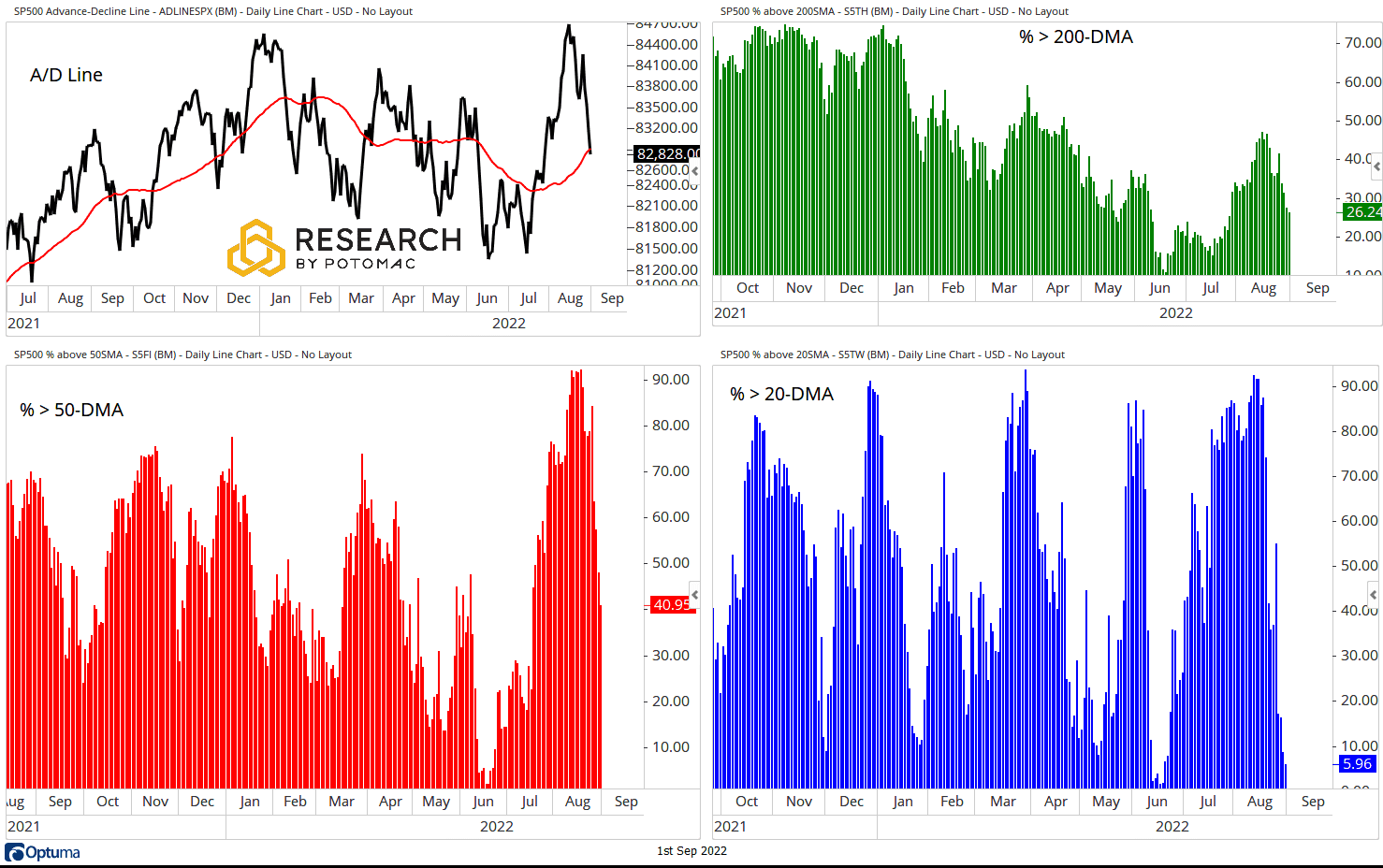
Small Cap Breadth
Breadth metrics for the S&P 600 Small Cap Index have weakened this week.
- Advance/Decline Line: Testing the 50-day moving average.
- Percent Above Their 200-Day Moving Average: 26% from 37% last week.
- Percent Above Their 50-Day Moving Average: 40% from 69% last week.
- Percent Above Their 20-Day Moving Average: 9% from 34% last week.
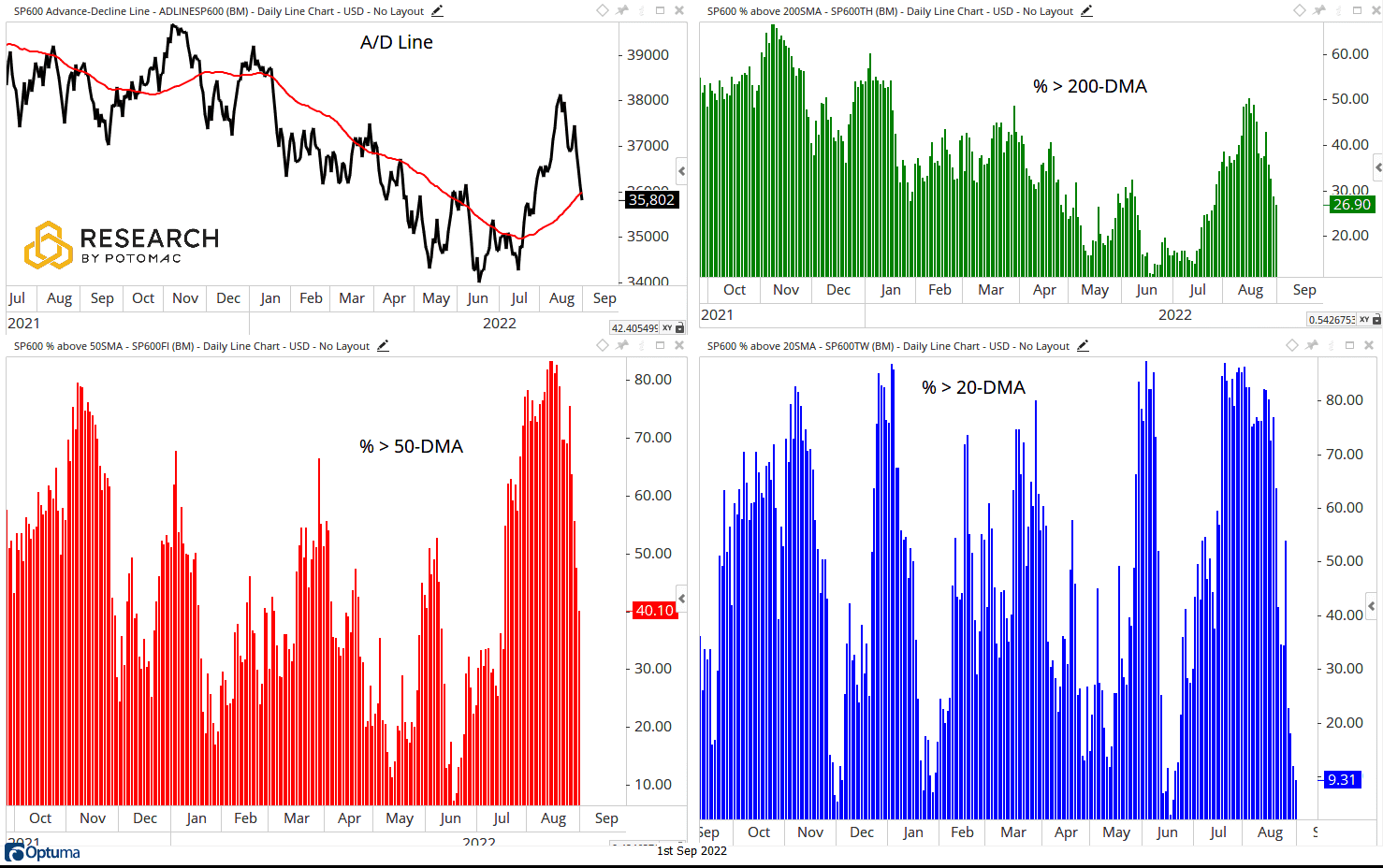
NASDAQ 100 Breadth
Breadth metrics for the NASDAQ 100 have weakened this week.
- Advance/Decline Line: Testing a rising 50-day moving average.
- Percent Above Their 200-Day Moving Average: 26% from 27% last week.
- Percent Above Their 50-Day Moving Average: 40% from 72% last week.
- Percent Above Their 20-Day Moving Average: 9% from 24% last week.
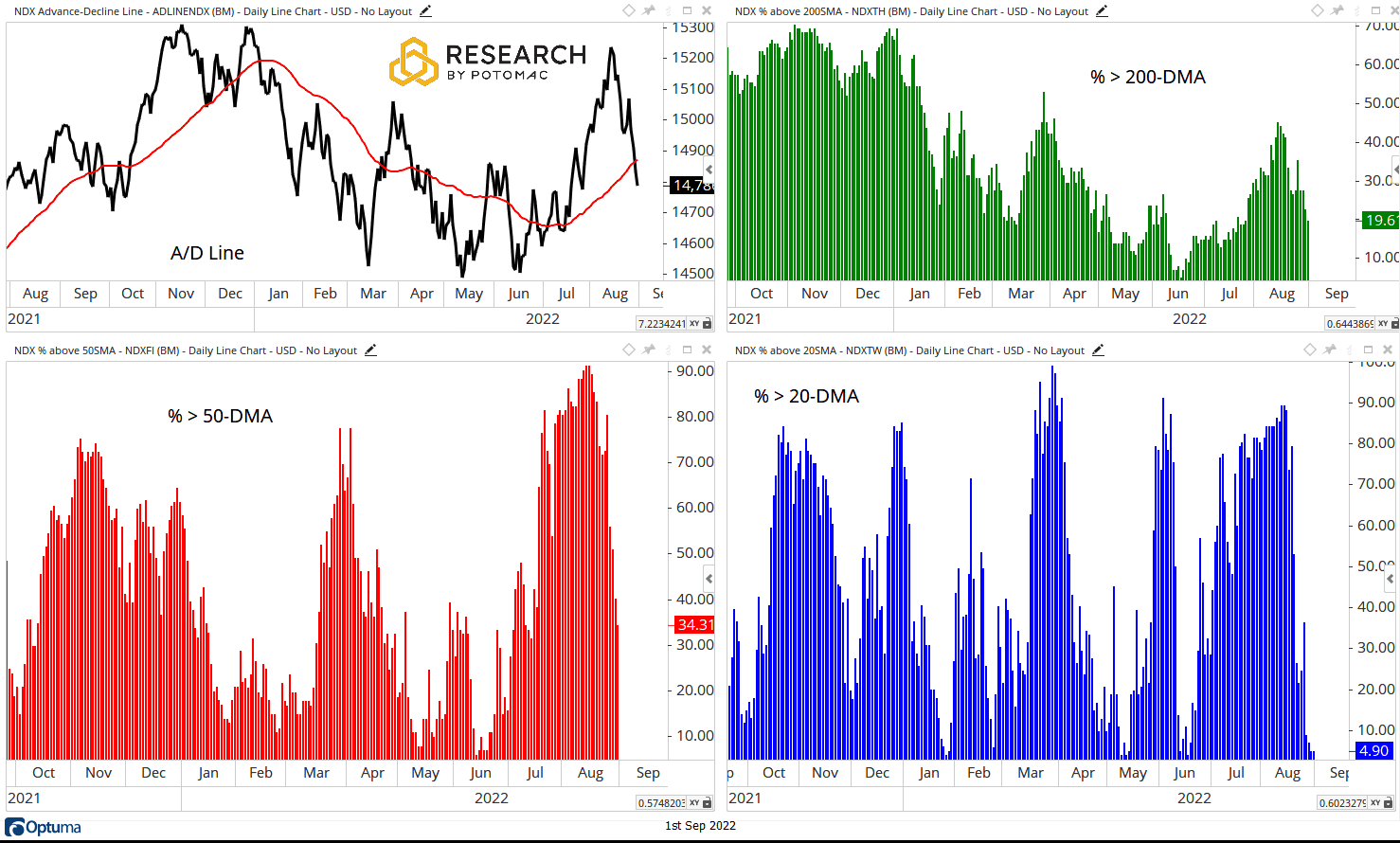
Take-Aways:
Breadth metrics continued to weaken across the major U.S. markets over the past week. Advance/Decline Lines have seen a large pullback to test their rising 50-day moving averages, and new lows on the NYSE are still moving higher. Short-term trend metrics are nearing washed-out levels but making a compelling case for aggressive bullishness in this environment is hard.
Potomac Fund Management ("Company") is an SEC-registered investment adviser. SEC registration does not constitute an endorsement of the advisory firm by the SEC nor does it indicate that the advisory firm has attained a particular level of skill or ability. This information is prepared for general information only and should not be considered as individual investment advice nor as a solicitation to buy or offer to sell any securities. This material does not constitute any representation as to the suitability or appropriateness of any investment advisory program or security. Please visit our FULL DISCLOSURE page. The company does not make any representations or warranties as to the accuracy, timeliness, suitability, completeness, or relevance of any information prepared by any unaffiliated third party, whether linked to the Company website or incorporated herein, and takes no responsibility for any of this information. The views of the Company are subject to change and the Company is under no obligation to notify you of any changes. Different types of investments involve varying degrees of risk, and there can be no assurance that the future performance of any specific investment or investment strategy will be profitable or equal to any historical performance level.
